When looking at its impact on the global music scene, the UK has consistently punched above its weight as a tiny isolated island.
As well as being home to Britpop and trip-hop, we’ve birthed dubstep, grime and funky house and have produced countless influential acts such as Massive Attack, Burial, Mala and the Digital Mystikz crew, plus the truly inimitable SOPHIE. We don’t get a lot right as a country, but music is definitely one thing we’ve had on lock for a good while now.
The dubstep boom that arose following its humble beginnings in Croydon unalterably changed the shape of the worldwide electronic music scene, but I’m here to state the case that the roots of UK electronic music run far deeper and continue to take hold round the globe today.
Even as dance music further splinters and international motifs are folded in, the effect of the UK’s influence is still felt strongly bubbling under dancefloors around the globe.
A SHIMMERING DIAMOND ARISING FROM THE MUD – IS ALL AS IT SEEMS?
The little old island known as the United Kingdom has always had ambitions that far outweigh its relatively small size, with there being a surprisingly aspirational nature underneath the veneer of downtrodden apathy. Whether in the form of our musical contributions to the world, the far-reaching effects of colonialism, or the sheer scale of international ridicule we’ve endured as a result of Brexit, our unassuming nature belies our ambition to make an impact on a global scale, no matter how messy the consequences.
The EDM explosion that followed dubstep’s mutation into brostep served as a springboard for the culture of inflated fees that we see both at the highest echelons of the DJ ladder and within the business techno industrial complex, but it’s also responsible for the high production spectacle that we see in today’s concerts.

Along with the maximalism of Daft Punk’s live shows, the desire to match increasingly lurid DayGlo dance music with visuals and a barrage of lights and lasers has led to bigger, more elaborate shows.
This appetite for more has even spilled over from the electronic music sphere into the mainstream, with any musician worth their salt now having a slickly produced live show to accompany their sets.
In a time when attention spans are waning and we’re constantly looking for the next thing to grip us, artists face a battle to keep us engaged, hence why even artists such as Bon Iver and James Blake have intricate, multilayered live shows complete with large scale visuals. This boom being a byproduct of the UK’s grotty, DIY scene is truly staggering.
Dubstep was thrust onto the world stage by – amongst other things – Skream’s deep rework of La Roux’s ‘In For The Kill’ and Caspa and Rusko’s somewhat controversial FabricLive.37 crossing into the mainstream, bringing the sound out of its murky depths and to a new set of ears.
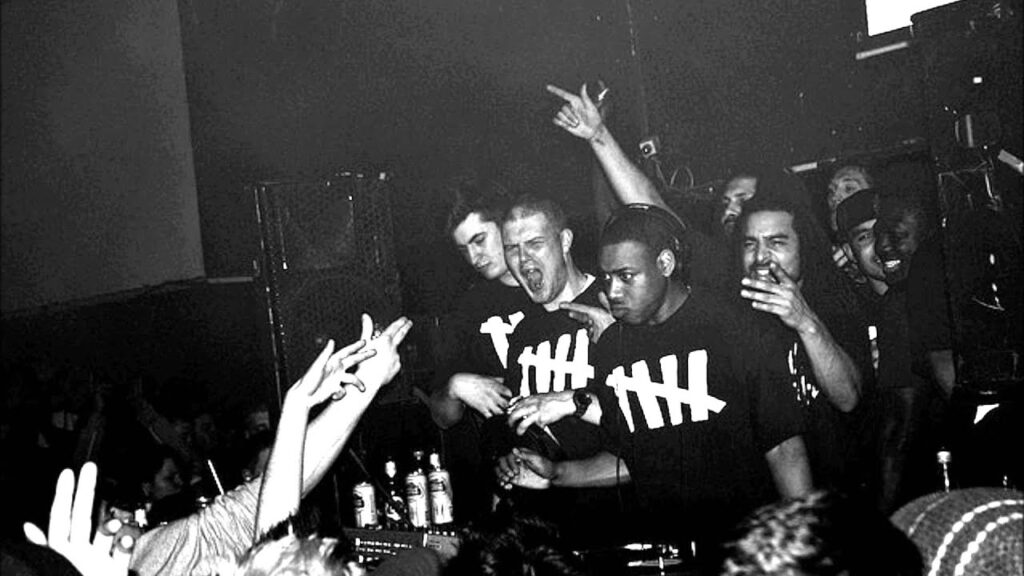
The time immediately preceding dubstep’s worldwide explosion saw a darker, more rugged strain of UK garage fuse with the spiky energy of jungle to create the moody, punkish hybrid that we now know as grime. Alongside this shift, UK funky was also becoming more prominent.
I briefly covered the transformation of UKG to dubstep in a previous article on Afrofuturism here but, in short, as UKG continued to further splinter and its smooth aspirational sound gave way to darker, more aggressive sounds, Plastic People served as a hub of influence, incubating plenty of key UK dance music genres and serving as inspiration for many of today’s pioneers who either played or were inspired by nights there.
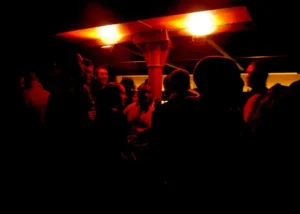
THE HOUSE THAT PLASTIC BUILT
As well as being home to the formative FWD>> parties, it was home to the legendary DMZ nights run by key dubstep architects Mala, Coki & Loefah + founder Ade Fakile’s Balance night which would see him embark on multi-genre odysseys .
As well as directly inspiring percussive maestro Shackleton, it’s here that the Hessle Audio origin story begins, with Ben having met Kevin McAuley (Pangaea) at Leeds Uni and, after meeting in the queue for FWD>>, finding out that David Kennedy (Pearson Sound, fka Ramadanman) would be heading to Leeds as a fresher.
They first promoted a club night together called Ruffage before starting an internet radio show with the same name, then going on to set up the label in 2007. Initially operating as a dubstep(ish) label, as the wider sound became more and more grotesque, the label started to become associated with the ‘post-dubstep’ sound; a prime example is ‘Broken Heart’ by Cosmin TRG, which came with an iconic Martyn remix. Martyn then went on to set up his 3024 label, a breeding ground for forward-thinking bass experiments.

Around Hessle Audio’s nascent years, Night Slugs was beginning to take shape, starting in 2008 during the early days of music blogs and when music’s relationship with the internet was still in its infancy. Night Slugs first started as a club night, being one of the first to champion a mixed-genre approach, wearing their influences on their sleeves and mixing UK and US sounds.
Whilst there were still distinct tribes and a hefty amount of gatekeeping occuring at this time, both Night Slugs and Hessle Audio began to push a genre-agnostic approach that would have an outsized impact on the development of the club scene. It’s felt today in the reigning ecleticism amongst many modern-day DJs and in the slippery hard-to-pin down ‘bass/club’ sound.
Night Slugs parties saw Jersey club, rap, R&B and technoid skankers played, alongside anything else they could throw into the blender. By taking all their influences and mixing it into a hearty genreless soup, they bridged the gap between UK and US underground music culture, particularly following the launch of their Rinse show and US-based sister label Fade To Mind.
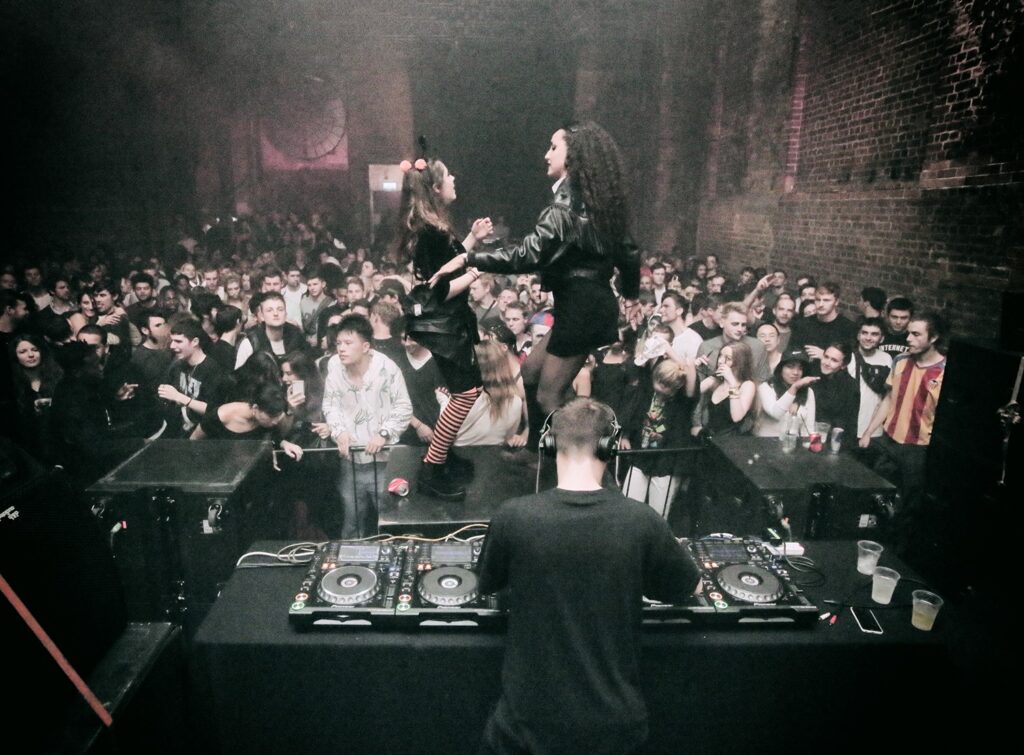
While this genre-agnostic approach is commonplace now, sounds were kept to much narrower confines at the time and, with this, there was far less cross-pollination.
When the parties swiftly morphed into a label in 2010, they were able to represent their sound in a more immediate way; their early ‘Club Constructions’ series shaped both the label and dance music into new forms, touching on techno, UK funky, ballroom, grime and more.
The label’s output has birthed bonafide classics that have stood the test of time – who can’t recall a moment when they’ve lost it on the dancefloor to Lil Silva’s ‘Seasons’ or KW Griff’s ‘Bring In The Katz’, screwface plastered on and gunfingers at the ready?
Jam City’s Classical Curves album represented a turning point for the label, deftly summing up the sound of the label thus far and setting a roadmap for its future by harnessing the energy of Baltimore bounce/Jersey club and reshaping it into something grittier. This was music that conjured vivid vistas whilst also gripping your body; make no mistake, this was music to make you move.
A VISION RESHAPED AND STRETCHED BEYOND ITS BOUNDS
Night Slugs were absurdly prolific during the peak of their reign and, though things have cooled down, founders Bok Bok and L-Vis 1990 still have their fingerprints felt all over the UK’s musical DNA after more than a decade on the frontlines.
L-Vis has rebranded as Dance System and is currently seeing huge crossover success, whilst Bok is running his hybrid grime/drill outpost AP Life. Girl Unit’s ‘Wut’ had a seismic effect on the scene and the synth workout still sounds fresh and impressively futuristic even now, whilst Lil Silva has worked with George Fitzgerald, Sampha and Kano and even contributed production to Adele’s juggernaut of an album 25 (?!).
Jam City has gone on to produce for bonafide superstars like Olivia Rodrigo and Kelela, with the Night Slugs crew being closely affiliated with the latter, contributing production on the alt-R&B superstar’s Cut 4 Me mixtape and impactful debut album Take Me Apart. Though she’s been quiet as of late, her experimental nature and avant-garde flair has seen her make a considerable dent in the contemporary R&B landscape.
The genre-bending nature that was a key part of Night Slugs’ makeup is now normal in any DJ set or artistic output, due in part to the range of sounds we can hear through the Internet but, beyond this, the overarching bass lineage within the UK continues to have a lasting impact on the worldwide electronic music community. Pinch’s Tectonic label and Peverelist & Kowton’s Livity Sound have remained enduring imprints that are still putting out consistently cutting edge music more than a decade down the line (pushing 20 years in Tectonic’s case).
A NEW KIND OF SOUND?
The evolution of Livity Sound has been particularly fascinating as it’s drawn an arc from post-dubstep minimalism to international-flecked sub-bass heaters. In order to stay innovating, output must stay subtly shifting form, and Livity Sound has managed to both tap into and stay shaping the never-ending feedback loop of global electronic music as influenced and informed by the internet.
In this sense, the label is carrying on the mission started by Shackleton and Appleblim’s influential Skull Disco label, the ghostly, tribalistic transmissions which sprouted from the dubstep scene and remained relentlessly ahead of their time.
Founded in 2005 and closing shop in 2008, the label retained an enduring shroud of mystery over its 10 releases. Pev and Appleblim even teamed up for a few collaborative efforts, coming together to make post-dubstep anthem ‘Circling’.
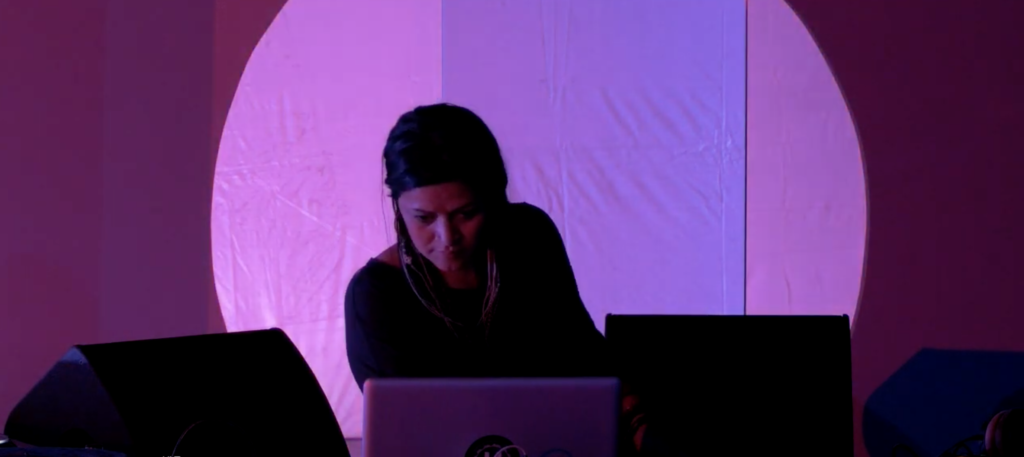
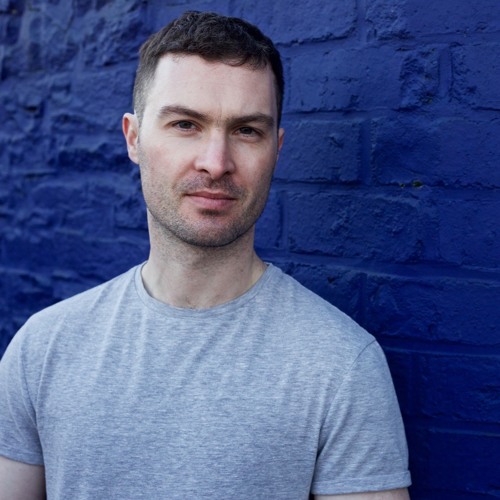
Around mid-2019, shortly following the label’s design evolution, Livity Sound saw a subtle shift in the music being released; where the label always paired sharp percussion and angular, syncopated beats with detailed-yet-stripped back sound design, international percussive elements and melodies started to be brought more to the fore.
This started with Cando’s ‘Bleak/Sundown’ release on the reverse label, before becoming even more explicit with the digital dancehall of Kouslin’s ‘2020 Vision’, then swiftly followed by records from DJ Plead and Azu Tiwaline. Operating within the feedback loop, around this time, the influence of the internet meant a creeping international influence within the ‘bass’ sphere.
BORDERS DISSOLVE, FLOATING INTO THE ETHER
Artists like Deena Abdalwahed and 33EMYBW saw themselves rise to prominence, gqom’s abrasive and hypnotic rhythms grew into an unlikely international sensation – swiftly followed by the more soulful sounds of amapiano – and the four-to-the floor kick that relentlessly ruled global dancefloors was being deconstructed into something altogether more bumpy and unpredictable.
Following their Livity releases, both Azu Tiwaline and DJ Plead were catapulted onto the global stage but, alongside their rise, labels and acts such as…deep breath… Nervous Horizon, SVBKVLT, Tristan Arp, DJ Python, Jyoty, AMAZONDOTCOM, INVT, Otik, both Tash LC and Sepehr with their Yeke Yeke and Shaytoon imprints respectively, CCL, Shannen SP, dj Haram, Sicaria Sound, Ehua, Timedance-affiliate Nico and his Akito Club imprint, Laksa, DJ Nigga Fox and Principe, have also greatly increased their visibility (I could go on!). Gqom king DJ Lag has even gone on to produce for Beyonce after first getting wider exposure from Goon Club Allstars…!
It’s difficult to fully encapsulate this scene due to its online nature, but the swiftness of online communication has meant that ideas can be shared across borders, thus fostering collaboration. Martyn’s 3024 label has had standout EPs from British producers such as Otik, Yak and TSVI (under his Anunaku alias), also looking further afield to other leading proponents of this hybridised bass sound such as Parris and Pugilist.
Martyn’s mentoring program which has created an online community for producers with varying levels of experience is another great example of this cross-border collaboration, as is DJ Pitch’s All-Centre label which operates a Discord server. NY-based Sobolik is a shining star who embodies this international mindset, experiencing a rapid rise following his debut EP on Italian label early reflex and going from participating in the All-Centre Discord servers to now managing them and releasing on the label.
KEEPIN’ IT FREAKY, KEEPIN’ IT RUDE
The fact that a lot of these labels/artists have risen up thanks to the borderless nature of the internet makes it a sound and scene that’s hard to define, especially as there are no doubt countless microscenes that have escaped widespread coverage, and also due to the undefinable shape of club. It would be disingenuous to suggest that the wide variety of sounds could be grouped under a single umbrella; as the music hyper-accelerates and contorts into different unrecognisable styles, it continues to elude grasp, remaining slippery and out of reach.
However, one thing a lot of these sounds retain in common is a strong sense of syncopation alongside prominent low-end and, depending on its origin, melodies that often reflect either the heritage of the creator or their natural locale. The DNA and crackling DIY energy of early dubstep and grime can be felt in the rawness of natural expression by many of these artists.
Much in the same way Detroit techno played its part in the worldwide development of dance music, the same fertile creative energy was cultivated in the output of Hyperdub, Timedance and artists like Burial, Bruce, Batu and Loraine James, and continues to be absorbed and recontextualised around the globe.

Label’s in the UK currently operating in this fascinating space and bending the margins include, Control Freak Recordings, Scuffed and Pressure Dome, all of which host artists from all over the world. Whilst often experimental and featuring shifting drum patterns, this loose sound is distinct from deconstructed club in that it never loses sight of danceability in favour of obtuse experimentation.
Someone who embodies this recontextualising perfectly is none other than superstar and unstoppable juggernaut Anz. Her sound + sets draw from across the UK’s hardcore continuum, weaving a tapestry of sound that balances nostalgia with newness whilst remaining fun.
Her broad palette maintains the balance between accessibility and underground street cred whilst retaining distinctive rhythmic patterns, showing why she’s swiftly become a UK national treasure experiencing crossover success – see her storming UKG remix for BBC Sound of 2022 winner PinkPantheress.
Her borderless nature is represented in the way she effortlessly references countless sounds from the UK’s bass lineage and spins them into something singularly her own. At a time when an entirely new unrecognsiable genre has yet to arise, her unique sound reinterprets the UK’s sonic heritage and deploys it to great effect, mixing it in with a range of other influences to create something fresh. She’s experienced a well-deserved meteoric rise but, even though she’s in another stratosphere, it’s the sort of swift jolting into the spotlight that’s become a lot more common in the past few years.
REPRESENTATION MATTERS; BUT IS THAT THE FULL STORY?
The internet can be seen to be the great equaliser in all this. You don’t need to have any musical training background, just a laptop and an ear for music and you can instantly upload something for the world to hear.
As we’ve become ever more intertwined with technology in our lives, we’ve elevated talented artists from all walks of life who may have gone under the radar if the barriers to entry weren’t so low. The upside of this is the manner in which minorities from all over the globe can push back against gatekeepers and carve out a space for themselves.
There’s been a recent sense of reclamation by collectives and institutions worldwide who’ve managed to break through whilst presenting a space for minorities. Nyege Nyege and Hakuna Kalula, Elijah and his Butterz + Visa Club projects, Shannen SP and Gaika’s Nine Nights collective, Eastern Margins, Daytimers, Sherelle’s BEAUTIFUL platform and the night I run in London called Unbound Events being just a few.
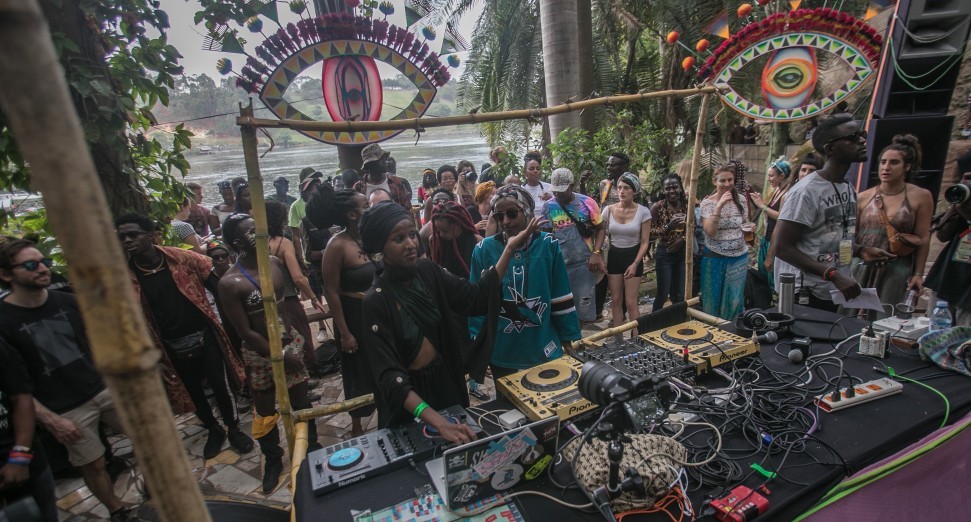
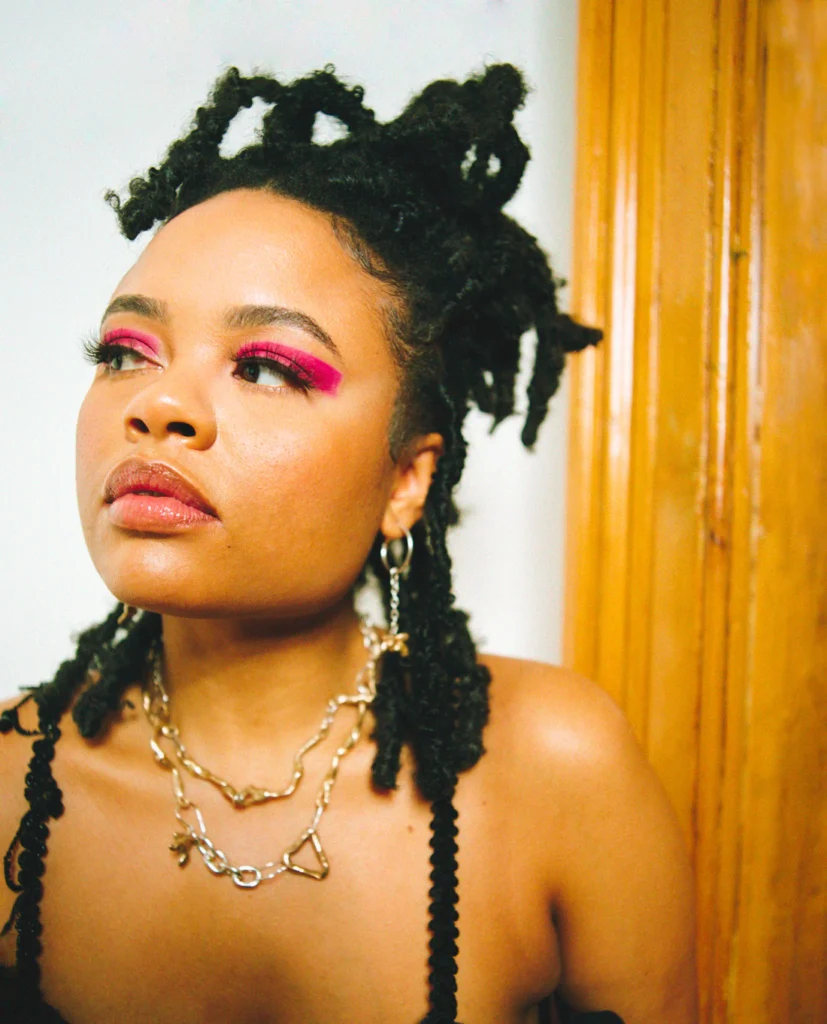
As hinted at before though, the downside is that if you aren’t able to gain media coverage, artists may continue to languish in the shadows. Prior to the supposed grand awakening in June 2020 when the world suddenly realised that racism existed – or at least seemed to – there was a distinct lack of coverage on minorities. There seems to be a course correction of sorts for now, but we’ll see what the lasting impact of that will be.
PoCs have always had to rely on themselves to build a way forward; prior to June 2020, dance music media suffered from what could be seen to be Hessle fetishisation. Whilst they’re a genuinely forward-thinking operation, the mechanics of capitalism meant endless fawning; it’s arguably well deserved, but this was often to the exclusion of other artists playing the same music that they play, music that originates from black culture. This isn’t a slight against them at all as they’ve always presented their art with passion and reverence
Ben UFO’s trademark blend of sounds from across UK soundsystem culture has been his calling card for a good while now; given that the UK’s music scene has always been far ahead of everywhere in the world, his style carries the torch for UK dance music’s forward-thinking nature.
He’s an incredible DJ and is rightly regarded as one of the most boundary-pushing in the world, but a white individual getting popular playing styles of music that were typically ‘black’, is very emblematic of the way in which the music industry practices erasure by whitewashing and sanitising typically rough and ready styles.
We’ve seen a whiplash reaction to this in the hasty platforming of minorities on big media outlets that never used to have a focus on them in the past. Given how long it took and the drastic change in coverage, a cynical reading of the situation could suggest this is mainly motivated by the bottom line and worries about reputation rather than pure compassion.
Regardless of intention, the net outcome is that there’s been a rebalancing of sorts. It’s a step in the right direction, but concerted efforts and true commitment motivated by a desire for rebalancing and not purely profit are required for there to be sustained, lasting change. With that in mind, however, platforming minorities only partially addresses the deeper rooted issues.
A LONG, HARD LOOK IN THE MIRROR – A PROBLEM OF PARTICIPATION
Whilst progress in the events industry with regards to race appears to be happening somewhat, a lot of large-scale events (events on all scales to be brutally honest) are still disappointingly scant when it comes to booking minorities. In addition, PoCs not being booked for events is only part of the problem; overall participation in the scene comes into play.
Statistically, there’s a higher proportion of white people involved in the electronic music scene so that permeates to the highest rungs of the DJ ladder, but there’s also the fact that a lot of minorities don’t see dance music as for them. This is partially due to it not being viewed as a welcoming space but also thanks to the twisted notion that it’s a ‘white’ pursuit.

This is particularly perverse given the roots of dance music are – like much of modern day music – overwhelmingly black. A line can be traced from funk to soul to Detroit techno and NY garage, right on through to UKG, jungle, grime and dubstep all the way to the modern day ‘club’ sound we hear today, with blackness being a common thread tying them together.
With respect to PoC participation in electronic music, there are many factors at play that can keep minorities at bay. It’s partially due to lack of visibility but it also comes down to the segregation of different styles of music in the club and the makeup of their respective crowds.
Though things are slowly changing, PoCs that may be curious could be put off after failing to see faces that look like them at the higher levels and in the crowds, thus making skewed coverage feed in with deeper societal divisIons to form part of a wider issue.
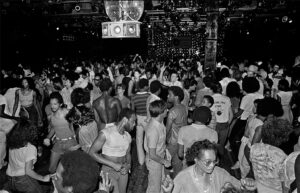
Additionally, whilst there has been much discourse on the topic of ‘safe(r) spaces’, past traumatic experiences and dealing with microaggressions – either from other revellers or insensitive bouncers or staff members – may contribute to minorities not feeling welcomed. For a scene supposedly built on PLUR principles, the stark reality is that it can often be elitist and exclusionary.
This, in addition to the whitewashing of electronic music through media coverage and the subsequent erasure of minorities has led to them being pushed out. Much in the same way the techno industry has vacuumed the soul out of techno and repackaged it in the form of business techno, by focusing on a small, less diverse pool of artists, up until now, a very white vision of electronic music has been presented.
WE DON’T GET NO LOVE, TENDER KISSES OR HUGS
This is all part of a bigger issue in the industry in which actual pioneers of these styles get forgotten. Looking at UK Funky for example, much like UKG (until its recent resurgence), it was a short-lived bubble that didn’t make it far beyond clubs; as the sound was predominantly club-focused and didn’t have much of a wider focus beyond that, it died before it was able to truly to take off.
One of the true mainstream stars of the UK Funky bubble is Katy B, a conventionally attractive white woman. The scene sadly didn’t get to stretch its wings too far before a slew of comedic edits essentially killed it and destroyed any credibility it had. Donaeo was another individual who experienced crossover success but not to the same extent as Katy.
There are a number of factors at play behind this, but it’s striking that a number of the pioneers including DJ MA1, DJ Premier, Apple and Supa D have – until recently – either been left behind or pivoted to other styles (see Scratcha DVA’S recent dig at FunkyStepz for their pivot to tech-house). After a break from music, Karen Nyame KG has finally got her much-deserved flowers and has locked down a daytime radio slot on Capital Dance Radio, but it’s telling that a black woman is only starting to break through a decade after her white peers experienced crossover success.
NO MORE LOOKING BACK TO LOOK FORWARD
The power of the internet + the appearance of multiple microscenes on the international stage has evened out the playing field somewhat. We’re starting to see artists from around the world climb the international ladder and make a name for themselves, thus allowing minorities from round the world to redress the imbalance. The move from standard drum programming has seen a more diverse roster of names starting to establish themselves on a global level.
Whereas techno used to be the dominant force within the industry and, still is to an extent, the resurgence of jungle and UKG has led to the disruption of the stale techno continuum (the juggernaut that is business techno notwithstanding).

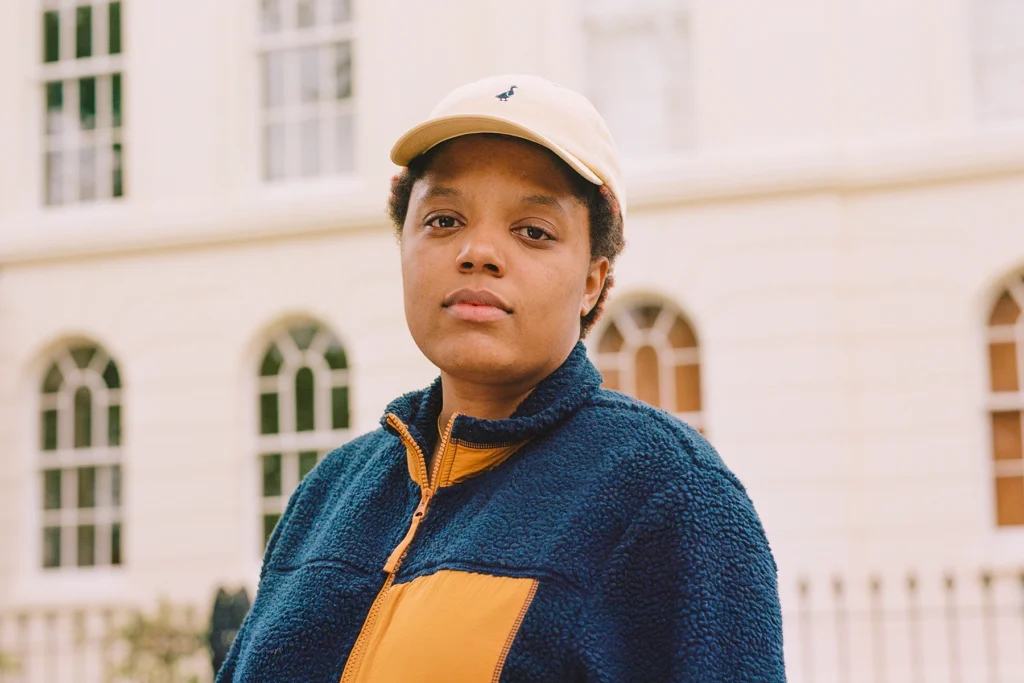
Moving away from our obsession with the past and our fetishization of old sounds and recycling old trends, there’s a truly exciting space in which the amorphous, slippery and hard-to-define ‘club’ sound lives. People are experimenting with new sounds that genuinely sound futuristic and, in folding in a number of different genres, are pushing familiar sounds into new forms.
The influence of UK music on this undefinable sound is unmistakable – in the swung, syncopated grooves, in its visceral, gut punch physicality – but it’s now flailed off into multiple unpredictable directions and, in bringing in motifs from various international cultures, has accelerated club culture to new exciting climes. While there’s a tendency to rehash old genres, only time will tell which new horizons will be explored and brought to life through the efforts of innovative artists.

One reply on “ From Feudalism to Futurism – how the influence of the UK’s music scene continues to be felt around the world ”
Comments are closed.